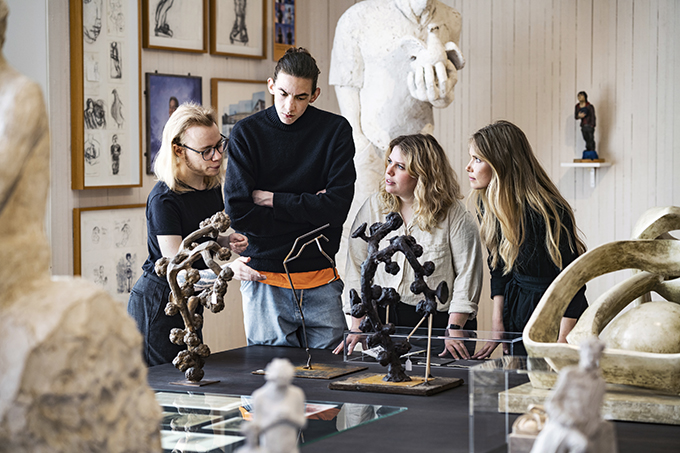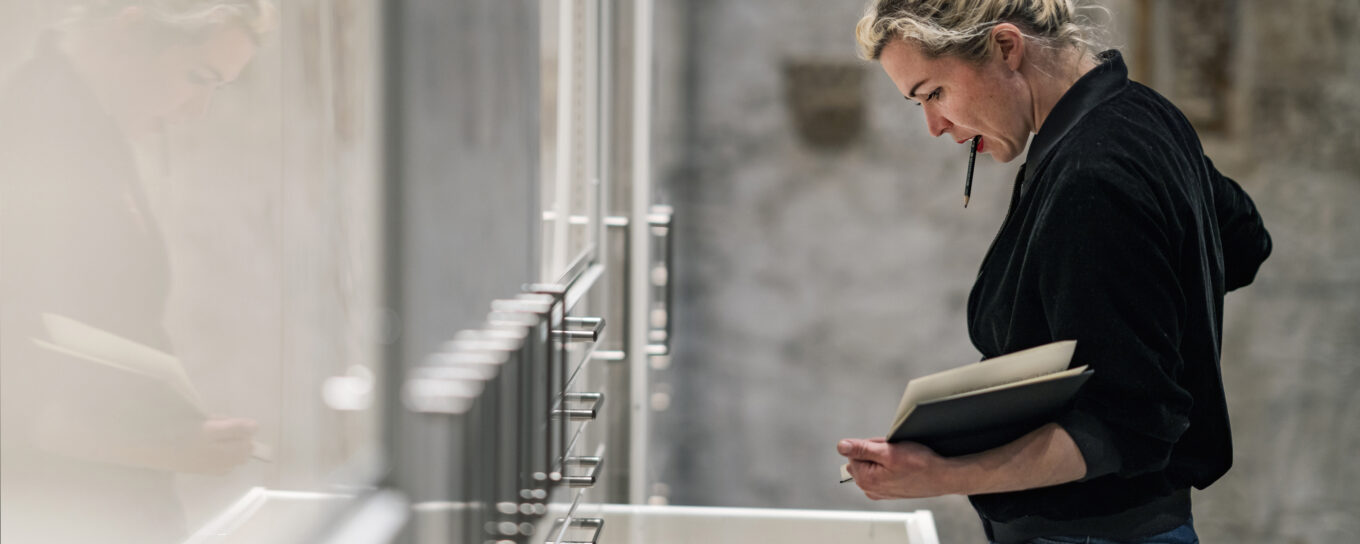- Open today 12–17
- Open today 12–17
About
Skissernas Museum – Museum of Artistic Process and Public Art – is part of Lund University and constitutes a platform for interdisciplinary conversations on creativity, the creative process and issues concerning our public spaces – a meeting place for collaboration across borders.
Every year the museum receives many researchers and students. In addition to the collection of over 30,000 sketches, researchers and students can access extensive archives. Since it was founded in 1934, the museum has archived its correspondence with artists, and many artists have donated their collections of private letters, which has resulted in an extensive archive. The museum also has an image and clippings archive that contains approximately 150,000 items relating to public art from Swedish and international newspapers and journals dating from the 1930s to the present day. Also in the archives are the artists’ project descriptions and documentary photographs of the creation of artworks. In addition, the museum has a reference library of literature relating to public art. These archives, together with the collection, make it possible to find out about not only the origins of artworks but also the public debate surrounding them, jury award statements, reviews and the artists’ own thoughts communicated in letters and personal notes.
Skissernas Museum and OBL
Object-based learning (OBL) is an educational method in which students physically handle objects to stimulate deep learning. The method is well-founded in research and can be applied in a wide range of disciplines. OBL involves an inclusive approach that breaks down classroom hierarchies, provides scope for critical thinking and leads to increased student well-being. It is an excellent tool for those who are interested in educational development and want to promote their students’ social interaction and welfare.

The educational advantages of OBL
Interactions with objects contextualise learning and give the students something to which they can attach knowledge, which improves the understanding of abstract and theoretical concepts. As several senses are activated, strong experiences are created, which stimulates memory retention. The museum environment takes teaching staff and students outside the typical classroom situation and encourages different types of learning. The method is based on the dialogue between students, teaching staff and museum staff in which the students’ curiosity leads them towards active knowledge generation, at the same time as they practice communicating subject-related knowledge in an easily comprehensible way, including to those with different academic backgrounds. Last but not least, many students think that hands-on work with objects is engaging and fun.
How does it work?
Teaching staff at Lund University can book OBL sessions at Skissernas Museum for themselves and their students. The teaching can be on an individual basis or in groups, on one or more occasions and at all academic levels. The students’ work is based on the piece of art, which arouses questions relevant to the subject. This could apply to semantics for language students, copyright issues for law students, the health effects of art for nursing programmes or strategies for research communication for students within engineering and science. The sessions are always tailored to needs and involve active cooperation between teaching staff and museum staff.
Contact Us
Are you interested in using OBL in your teaching? Contact:
Karin Annebäck, mediation and public engagement coordinator
karin-linnea.anneback@skissernasmuseum.lu.se
Frida Stenmark, mediation and public engagement coordinator
frida.stenmark@skissernasmuseum.lu.se
Internship
We are happy to accept interns as a part of their education and we already collaborate with different programs offering internship courses. As a student, you are also warmly welcome to apply for an internship with us yourself, to be relevant, the internship needs to be included as a mandatory part of an ongoing university education or vocational education. Several educations offer internship courses for liberal arts students as a career start.
We have the opportunity to accept two to three interns each semester, but this may vary over time. Send your application well in advance, preferably two to four months before the desired internship period.
To apply for an internship with us, please download and fill out the form below and email it along with your CV to:
praktik@skissernasmuseum.lu.se
Form: Declaration of interest in internship (word)
Unfortunately, we do not have the possibility to accept interns from elementary school or high school.

